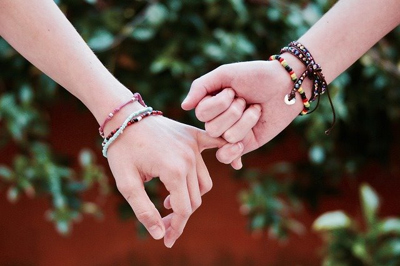
Relationships, connection and belonging
We all need to form relationships, connect with other people, and belong to social groups. We have relationships with many of the people around us, not just within our own family. For example, relationships form between friends, between colleagues at work, and between teachers and pupils in schools. We get a sense of connection and belonging from having good relationships, and there is strong evidence that a feeling of belonging can lead to good mental health. Having good relationships is really important for a child or young person’s wellbeing.
What makes a good relationship?
A good relationship involves:
Trusting each other
Being open and honest, keeping promises.
Communicating effectively
Choosing the right time and place, listening carefully to really understand the other person, thinking about their perspective and being aware of non-verbal cues.
Respecting each other
Being considerate and aware of how the other person feels.
Give and take
Giving to each other, and cooperating and compromising to both get the best from the relationship.
Valuing differences
Accepting the different views and opinions of the other person and valuing each others’ differences.
How to build a good relationship with a child or young person
Trusting each other
- Keep the promises you make to the child or young person so they can trust that you mean what you say.
- Be honest and clear about what you expect from them.
- Say sorry when you make a mistake, and forgive them for their mistakes. Help them understand that you expect the same in return.
- Remember that all the things you say or do will affect the level of trust the child or young person has in you.
Communicating effectively
- Make time to listen to the child or young person.
- If you are busy and unable to concentrate on them when they want to speak to you, either stop what you’re doing or explain to them that you'll need to finish so that you can give them your full attention.
- When they’re talking to you, put your thoughts and feelings aside so that you can really try to see things from their point of view.
- Listen with the intention of really understanding what they mean. Acknowledge how they feel without judging them or offering solutions, so they feel supported and understood.
When I ask you to listen and you start giving advice, you have not done what I have asked. When I ask you to listen to me and you begin to tell me why I shouldn’t feel that way, you are trampling on my feelings. When I ask you to listen and you feel you have to do something to solve my problem, you have failed me, strange as it may seem. Listen! All I ask is that you listen: not talk or do - just hear me.
Ralph Roughton
Watch this short video to find out more about communicating effectively:



